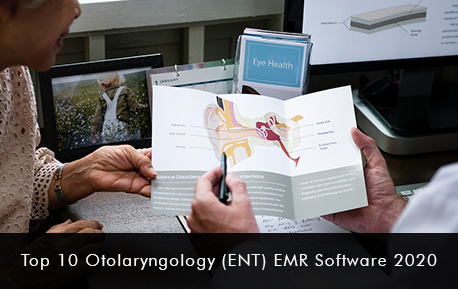Otolaryngology (ENT) is concerned with the surgical management and treatment of diseases and disorders of the ear, nose, and throat, as well as the related structure of the head. It is the oldest medical specialty practiced in the US. It deals with a wide variety of patients and conditions and requires software designed to fulfill the requirements of ENT related abnormalities.
Nowadays, Otolaryngology (ENT) EMR Software fulfill a wide range of parameters for the unique Clinical and Financial workflow requirements of the medical practice. In addition to an integrated practice management system, patient portal, and medical billing, ENT EMR Software also allows the physicians to select a local server or cloud-based architectural approach by keeping in view the scalability of their practice.
Features of Otolaryngology (ENT) EHR Software
To have a good understanding of how the software works, it is advisable to learn about the different features and functionalities of the software. Before choosing an Otolaryngology (ENT) EHR software, we should check if the software has the following key features:
Template Notes – Otolaryngology EHR software should offer customizable templates for SOAP note-taking.
ICD/CPT Codes – To ensures accurate claims, easier billing, and overall faster processing ENT EHR Software should provide unique and updated ICD-10 codes for the medical practice
Workflow Management – ENT EHR software should be able to manage, document and maintain all the ENT related workflows and provide Clinical Decision Support
Equipment Integration – ENT Electronic Medical Records Software Software (EMR) should be integrated with devices and equipment that helps in diagnosis, assessment, and treatment (e.g. auriscopes, laryngoscopes, etc.)
Lab Interface – Otolaryngology Software should have a built-in lab interface for automatic lab result availability
Real-time Dashboard – Otolaryngology (ENT) EMR software must feature a real-time dashboard that will help physicians to clearly view patient charts, profiles, billing processes, scheduling, etc.
Allergy & Medication Management – ENT software with secure messaging allows data sharing between a patient’s immunologist and otolaryngologist. This way, ENT specialists can keep track of patient allergies and prescribe medication that won’t result in a reaction.
Sleep Studies – ENT Software should be able to assist in tracking, and assessing data for sleep apnea, snoring or other otolaryngology-related sleep disorders.
Top 10 Otolaryngology (ENT) EHR Software by EMRSystems
EMRSystems values its customers and has compiled a list of the 10 best and Top-Ranked ENT Software solutions for physician practices in 2020. The list is completely based on authentic customer reviews and ratings:
-
Epic EMR Software
-
PrognoCIS EMR Software
-
drchrono EMR Software
-
Modernizing Medicines Healthcare IT Suite
-
NextGen Healthcare EHR Software
-
ChartLogic EHR Suite
-
AllegianceMD EHR Software
-
Practice Fusion EMR Software
-
AdvancedMD EMR Software
-
Praxis EMR Software
Make sure the software you’re going to purchase is certified. For ENT Software, the certification you should be looking out for is by the ONC-Authorized Testing and Certification Body (“ONC-ATCB”). They are responsible for making sure your vendor meets Meaningful Use objectives and is HIPAA compliant. Many ENT Software vendors offer a lot of features but providers mostly find them redundant or perceive them as a marketing gimmick. Some of these features are actually very helpful as they are advertised, but what you should be concerned with is whether they are relevant to your particular practice or not. You really need to look at your financial workflow. It is highly imperative that the software you choose is compatible with that of the rest of the practice and with the existing EMR Software if you are opting for a stand-alone option. Please do consult your provider to ensure that the software you are choosing only provides those features and not more than what you need.






